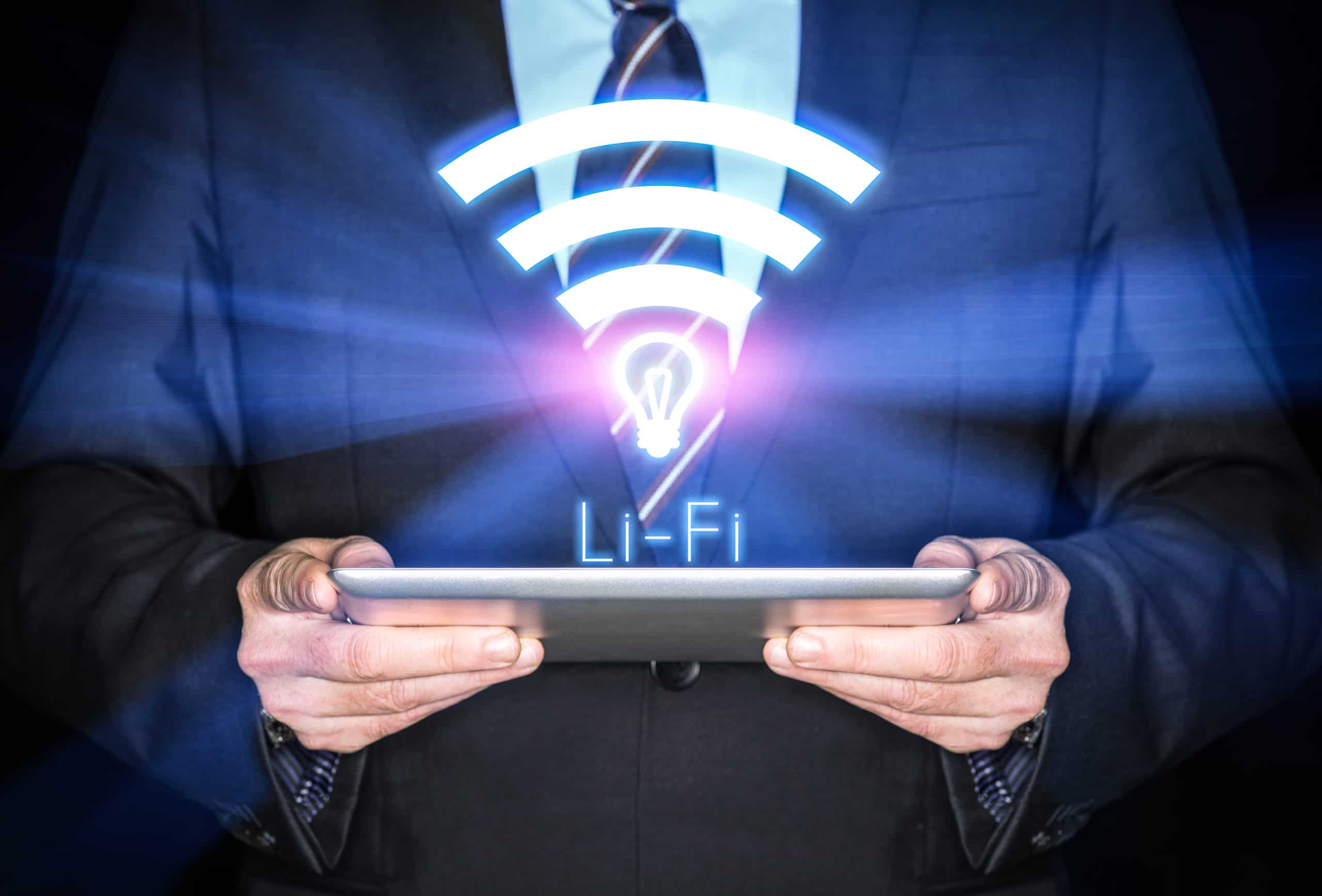Today, Wi-Fi is probably one of the most favorite words among internet users. In the future, Li-Fi could be a more favorite word.
Looking back, we can all totally agree that, those old days when people had to use dial-up connections to access the internet seem excruciating as compared to the Wi-Fi we are using today. The Wi-Fi allowed a faster and more convenient connection to the point where it has become impossible to live without it. Access to information, chatting with friends, shopping online, conducting meetings, and so many more exciting features have become available at our fingertips because of Wi-Fi devices. And everyone would be happier if it there could be an even faster connection.
What Is Li-Fi?
Light Fidelity (Li-Fi) is a bidirectional wireless system that transmits data via Light-Emitting Diode (LED) or infrared light. Even though the technology has been around since 2011, it has become more popular after the launch of the 5G network. Unlike Wi-Fi, Li-Fi transmits wirelessly using visible light. Several studies have found that communication via Li-Fi has the potential to outperform Wi-Fi.
Even though scaling up of the technology is still not feasible, theoretically, the technology is praised for its high-speed connection. Its capability to carry data rates, which is much faster than Wi-Fi, is already being used in marketing promotion campaigns. However, because of its current operational condition, which requires the use of LED lights, incorporating it into spaces without LED lighting systems would be difficult.
How Is It Better Than Wi-Fi?
In many aspects, Li-Fi is seen as far better than Wi-Fi, with a speed almost 100 times faster than Wi-Fi. And it is expected to be an ideal solution for connecting the world via the internet with optimal affordability. It’s a broad day fact that the faster the internet the more satisfied are the users.
Another good news is that the adoption of Li-Fi technology is expected to be cheaper than Wi-Fi due to the low cost of producing LED bulbs which also have lower electricity consumption during operation as compared to other forms of bulbs. It’s like hitting two birds with one stone. Imagine, while using light, it is also possible to use the internet at the same time with reduced electric bills.
Besides the high-speed internet access and affordability, Li-Fi technology can ensure better security since Li-Fi signals are entirely dependent on the presence of visible light. Due to the fundamental nature of visible light being incapable of transmitting through opaque surfaces, information delivered through Li-Fi has contained inside areas where the visible light is present. Hence, concerns associated with eavesdropping, spoofing, and even brute-force attacks will be greatly reduced.
What’s Holding It Back from Scaling Up?
As much as it’s appealing that Li-Fi has the potential to create a safer environment with regard to cyber-attacks, its availability in a constrained space is taken as its major drawback. The presence of physical obstacles in the way of Li-Fi waves has the potential to restrict the stability of the network or even block the signals. This does sound like a road any internet user wants to take.
Ideally, setting up the framework for Li-Fi systems is affordable because what it requires is just a set of LED bulbs positioned strategically in areas of internet use. However, when it comes to implementing the theory, there seem to be some challenges. Because of its restricted range, several Li-Fi routers are required to be installed in order to facilitate a better connection. This implies that there is a need for more purchases of Li-Fi routers, more deliveries of purchased items, and more installations. In plain words, more expenses are waiting for Li-Fi users than providers.
What to Expect in the Future?
According to a report by Precedence Research this year, “the Li-Fi market size was reached at $127.66 million in 2021 and it is projected to be worth around $15,310 million by 2030, poised to grow at a compound annual growth rate (CAGR) of 51 percent from 2022 to 2030.” The report also included that the main driving factors for the growth of the market are the rising use of smart devices and the development of smart cities in both developed and developing countries.
As much as the market potential is presenting a lucrative future, it’s hard to say when exactly Li-Fi will scale up and emerge as a reliable and affordable connection source with better offers than Wi-Fi. However, a faster internet connection is music to our ears. As of today, several tech companies have shown an interest in integrating Li-Fi into mobile devices, smart lighting systems, and location-based devices. But the doubt remains: will it ever be the most favorite word in the world of internet users? Will it entirely replace Wi-Fi? Well, there is a positive likelihood that it will, sooner or later.
Photo: Audio und werbung/Shutterstock
You might also like:
Blockchain Technology Shaping the Fate of Conventional Banks
Support us!
All your donations will be used to pay the magazine’s journalists and to support the ongoing costs of maintaining the site.
Share this post
Interested in co-operating with us?
We are open to co-operation from writers and businesses alike. You can reach us on our email at [email protected]/[email protected] and we will get back to you as quick as we can.









